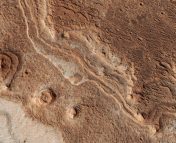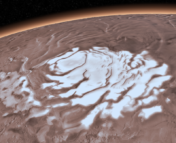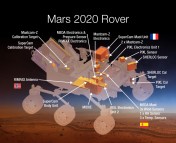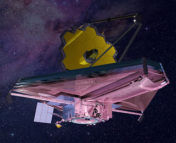Title: Evidence for geologically recent explosive volcanism in Elysium Planitia, Mars
Authors: David G. Horvath, Pranabendu Moitra, Christopher W. Hamilton, Robert A. Craddock, and Jeffrey C. Andrews-Hanna
First Author’s Institution: University of Arizona, Tucson, Arizona, USA
Status: Submitted to Icarus
The status of modern Mars
More and more, our solar system seems to be a pretty lively place. Although Mars displays abundant evidence of volcanic activity in its ancient past, the authors of today’s paper argue that they have identified the youngest volcanic deposit yet discovered on that planet. So young in fact, that if true, it would be reasonable to assume that violent eruptions are still possible on that cold red neighbor of ours.
Whereas plate tectonics, volcanic eruptions, and erosion frequently alter the Earth’s surface, and there is evidence for active volcanoes on Venus, Mars has often been considered relatively dead. Modern redistribution of materials as wind-driven sand and global dust storms have been seen to change the surface of Mars in recent years in very modest capacities, but overall the red planet is thought to have remained largely unchanged for up to a few billions of years. This idea is strongly supported by the abundance of impact craters across its surface, where more craters generally indicate an older region.
Today’s paper examines a somewhat unusual geologic feature in the area of Elysium Planitia, a relatively flat expanse named for the nearby ancient volcano, Elysium Mons (see Figure 1a). More specifically, a number of large cracks in the ground, referred to as fossae, are grouped together under the name Cerberus Fossae. Around a particular section of one such fissure, the researchers identify a patch of the surface they refer to as the Cerberus Fossae mantling unit (CFmu). The CFmu consists of sediment that stands out based on its relatively dark color (low albedo), resistance to temperature changes (high thermal inertia), and symmetric areal distribution (see Figure 1b).
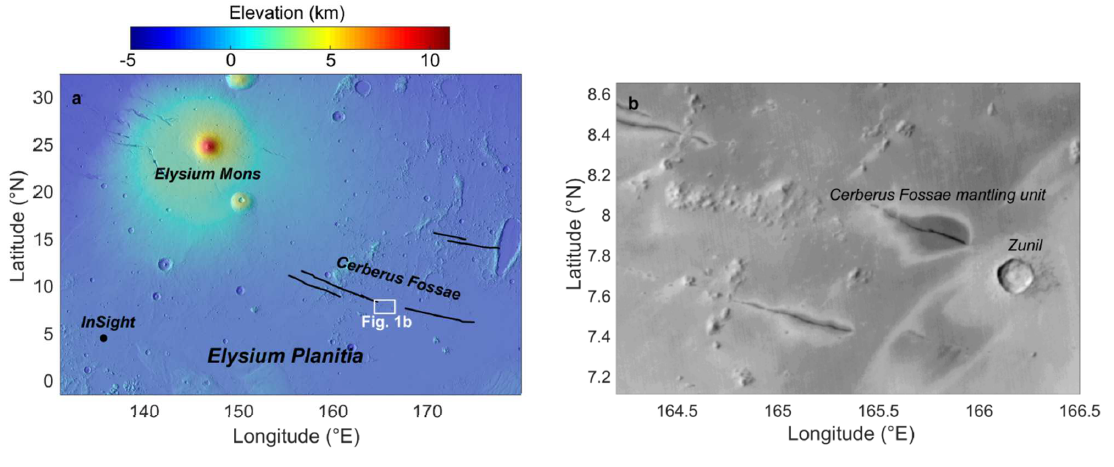
Figure 1 – Maps of study region. (a) Regional context for Cerberus Fossae within Elysium Planitia showing nearby volcanic constructs and the InSight landing site. (b) Subset of Cerberus Fossae showing closer view of fissures including the Cerberus Fossae mantling unit and nearby Zunil crater. Figure 1 in today’s paper.
Explaining an anomalous feature
At first glance, the CFmu may not stand out compared to features surrounding other nearby fossae. However, the authors point out its uniquely symmetric shape. Whereas features that have formed around craters and other fissures in the area are strongly asymmetric, extending mainly to the southwest in the downwind direction, the CFmu extends 6 km to the northeast and 12 km to the southwest—many times further upwind than the general population of features in this area. This difference in shape may indicate that the CFmu was deposited by a volcanic eruption, rather than it originating just from wind activity that either eroded or deposited a distinct surface layer. In contrast to the effusive volcanic style common for Hawaii, this eruption would have been closer to the explosive style seen at Mount St. Helens, which throws pyroclastic rocks and ash across a broad area. But instead of a massive conical structure like we usually imagine for volcanoes, the eruption here would have emanated from a fissure, as we’ve seen evidenced from deposits on Earth, Mercury, and the Moon.
To describe the possible history of the CFmu, the authors study the abundant impact craters in the area (see Figure 2). Because the deposit is darker than the material it overlies, when a large impact penetrates deep enough, it excavates some of the lower, brighter material. Craters with dark ejecta could either have been too shallow to penetrate the CFmu or were already there before the eruption. Craters with bright ejecta likely occurred after the CFmu was deposited and can be an indication of the thickness of this upper dark layer, finding a max value of 10 to 40 cm. With a standard assumption about the relationship between crater diameter and depth, the decreasing size of bright ejecta craters with distance describes the expected thinning of the CFmu with distance.
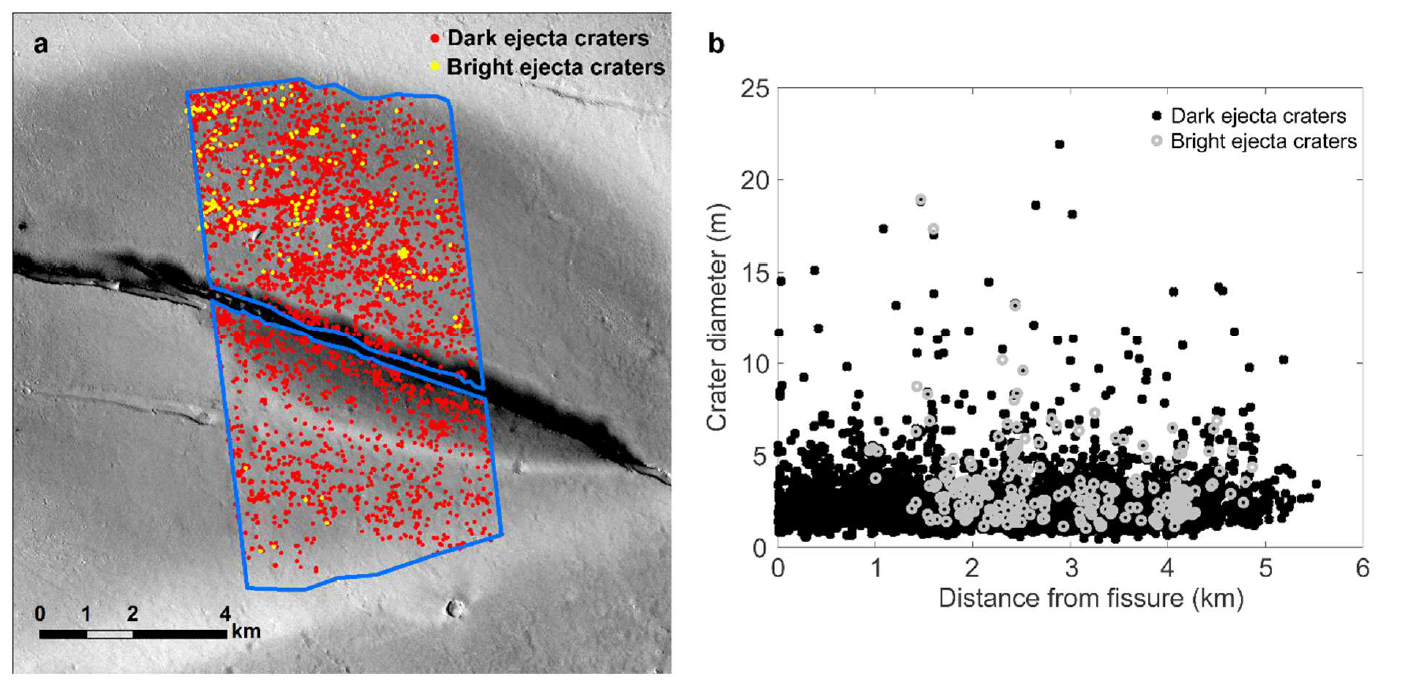
Figure 2 – Craters on the Cerberus Fossae mantling unit. (a) Map of measured small craters categorized as either dark ejecta (red) or bright ejecta (yellow) craters. (b) Plot of crater size as a function of distance from the fissure showing both dark ejecta (black dots) and bright ejecta (gray circles) craters. Figure 6 in today’s paper.
How young is young?
Besides thickness, the number density of craters on the deposit is an indication of the age, since older features have been bombarded more over time. Using standard models of the expected rate of production for different size craters, the authors estimate an age of about 53 to 210 thousand years. Whereas some lava flows in the area have previously been reported to be as young as ~2.5 million years old, the CFmu could be less than an order of magnitude younger, strongly suggesting that Mars could continue to be volcanically active today.
Although the absolute age estimates are subject to large uncertainties and challenges, the relative age of the deposit is perhaps more clearly indicated. The CFmu appears to overlap the ejecta from, and is thus younger than, the nearby Zunil crater (see Figure 1b) that has been similarly dated at ~0.1 to 1 million years old. Furthermore, if any place on Mars were going to be volcanically active, Elysium Planitia makes a lot of sense. The seismometer on the nearby InSight mission has already detected that the largest “Marsquake” events so far have emanated from this region, which could be associated with the activity of subsurface magma.
Breathing life into modern Mars
If the CFmu is indeed a young volcanic deposit, ongoing volcanic activity on Mars would bear important implications for habitability. Excitingly, volcanic environments could provide a cozy energy source for microbial life in the subsurface where moisture may be present. Somewhat conversely, detections of transient methane gas on Mars could be explained by this recent volcanism as opposed to a possible biologic origin. The rover Perseverance will soon be exploring a very different part of Mars for signs of ancient life, but we should also keep our eyes on InSight as it continues to monitor the planet’s “heartbeat” for signs of such ongoing volcanic and tectonic activity.
Astrobite edited by: Wei Vivyan Yan
Featured image credit: The CFmu and Zunil Crater in THEMIS Daytime IR captured from Mars Trek

